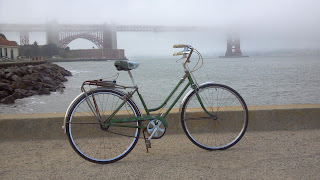 I generally like most stringed instruments, even finicky ones like my problem child banjo. So, recently when I got an interesting old Anton Beder in need of some repairs I was excited for the project and prospect of another violin to play with.
I generally like most stringed instruments, even finicky ones like my problem child banjo. So, recently when I got an interesting old Anton Beder in need of some repairs I was excited for the project and prospect of another violin to play with. It needed new strings, a new cord on the tail piece, some clean up if the finish and an adjustment to the sound peg. It also needed a new bow as the old one was shredded and I've yet to learn how to re-hair them.
I added a fourth fine tuner to make it easier with my admittedly limited skills. I have a newer unlabeled but presumably Chinese violin, a US made model sold by Sears that has been in the family since the 1930's and another from the late 1800's. They've all been OK to tune but the Beder is proving to be a challenge for me, even if it sounds nice out of tune. It's a 3/4 which may be why I'm having a hard time with it but again, it's probably me that's the problem and not the violin.
 This is the third violin I've repaired and sounds as good as the others excepting the oldest one that did ironically sound the best, though I'm blaming that on coincidence rather than some magic of age or quality. It's also nice to have a German made instrument in the mix assuming it's not a fake. If it is a fake it's at least not a new one as the rosin in the case is old enough to have retailed for $.45 and simply looking at it, the patina and finish is consistent with instruments from the 1930's and 40's. It was a fun find but will most likely soon find a new home with an aspiring young violinist.
This is the third violin I've repaired and sounds as good as the others excepting the oldest one that did ironically sound the best, though I'm blaming that on coincidence rather than some magic of age or quality. It's also nice to have a German made instrument in the mix assuming it's not a fake. If it is a fake it's at least not a new one as the rosin in the case is old enough to have retailed for $.45 and simply looking at it, the patina and finish is consistent with instruments from the 1930's and 40's. It was a fun find but will most likely soon find a new home with an aspiring young violinist.






